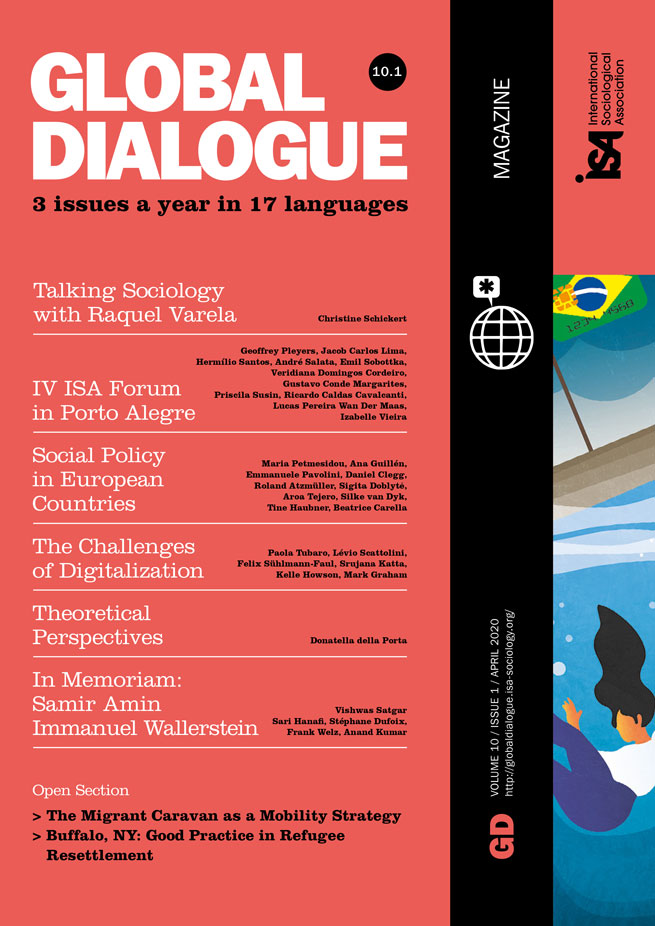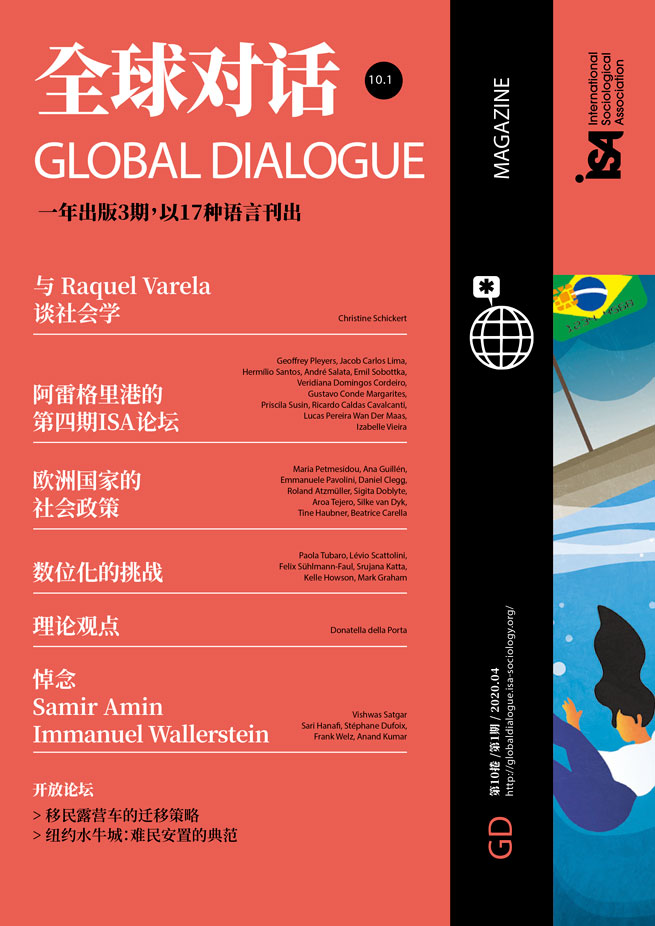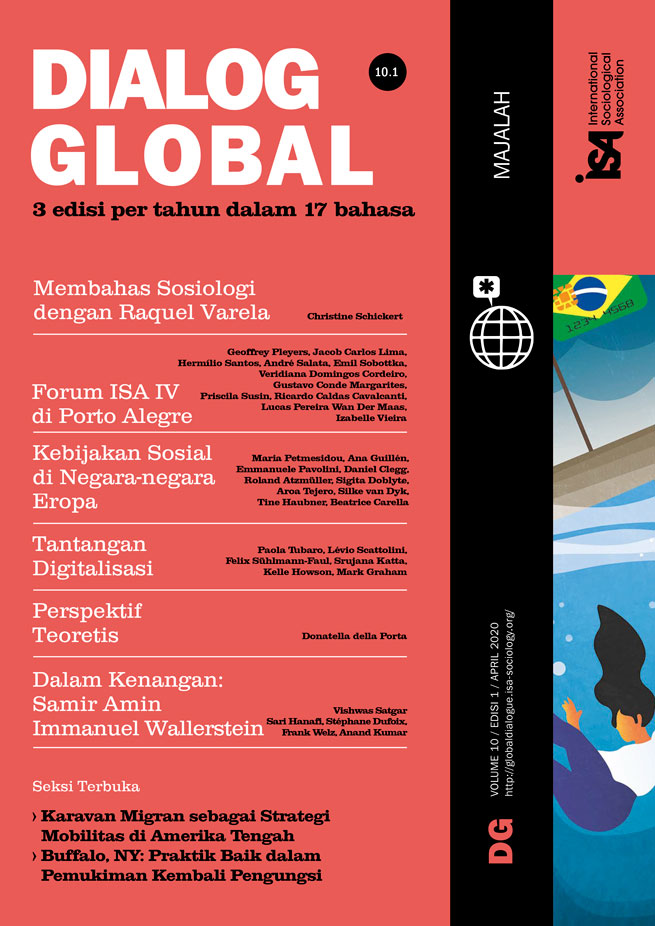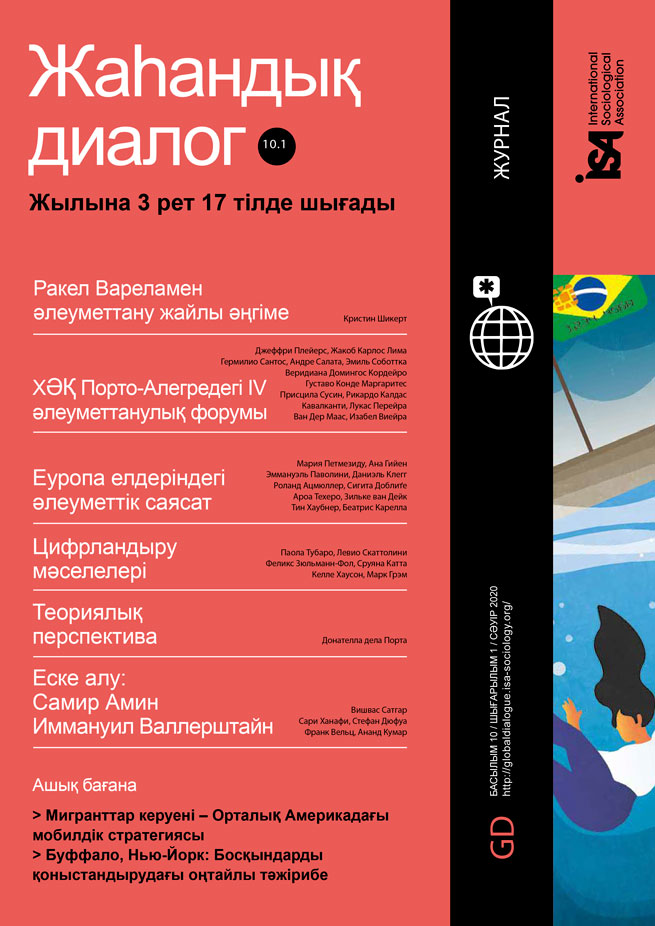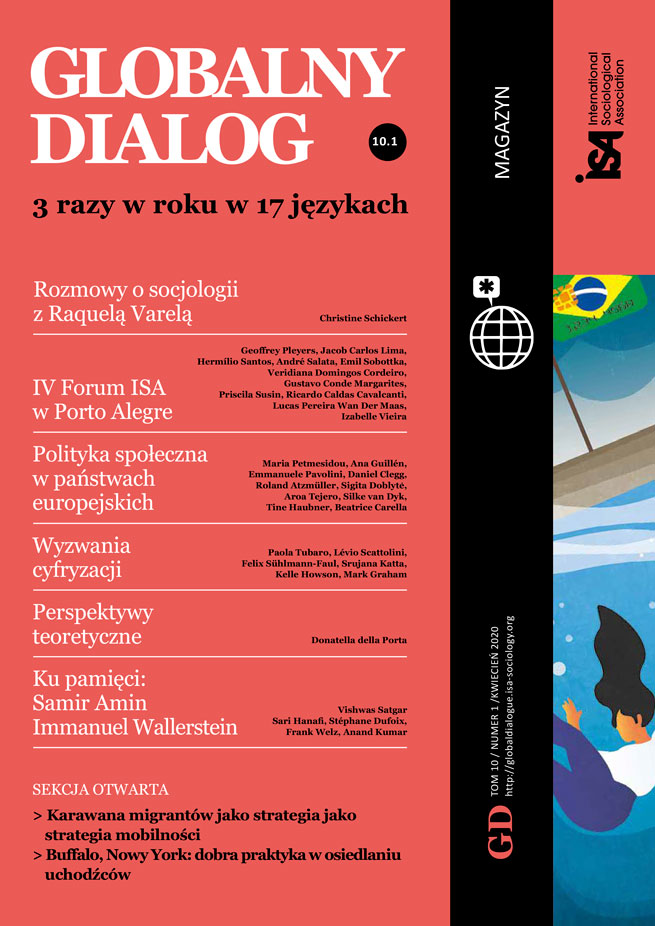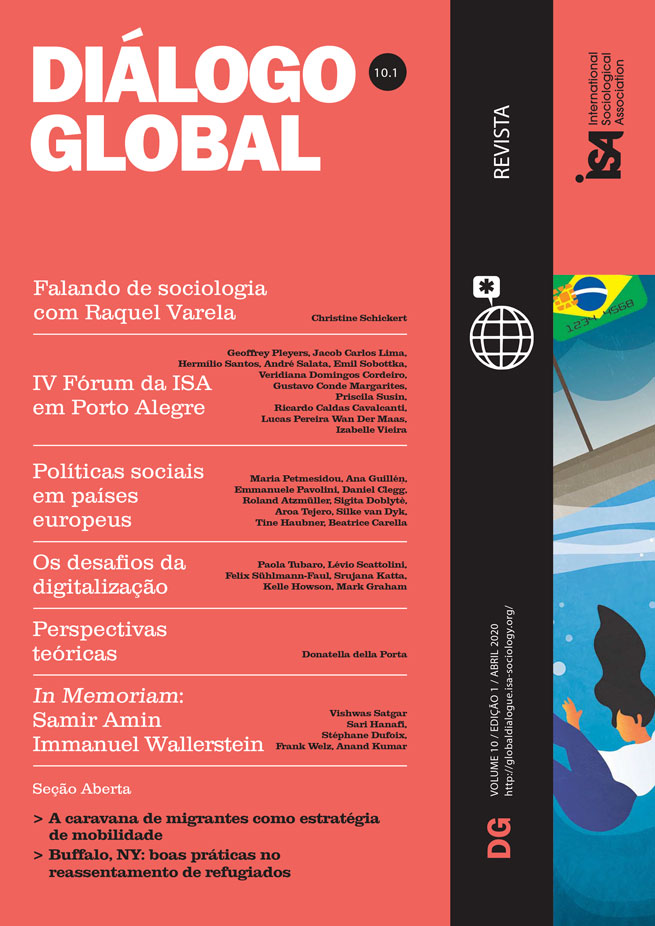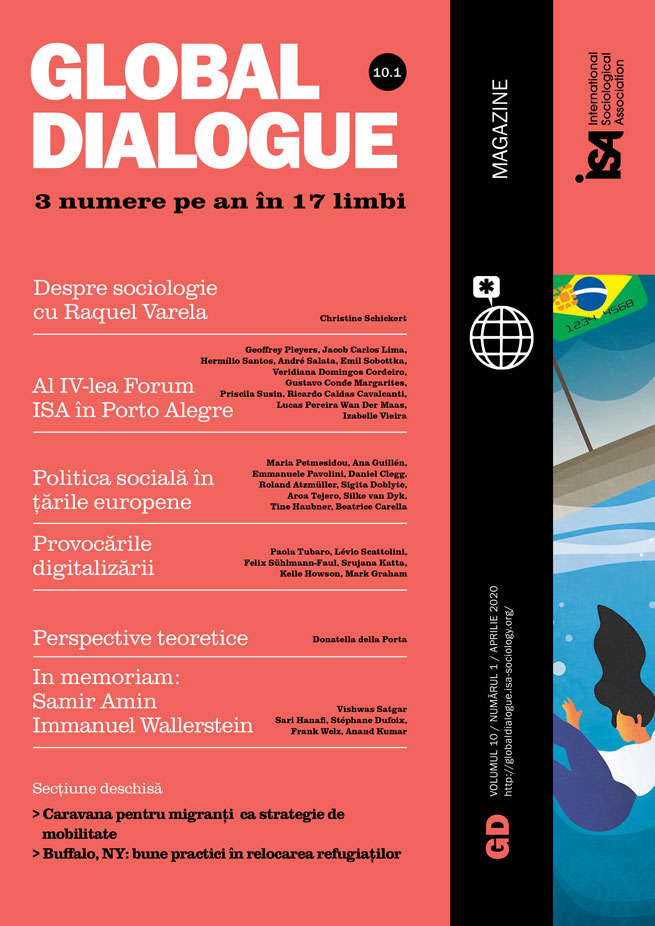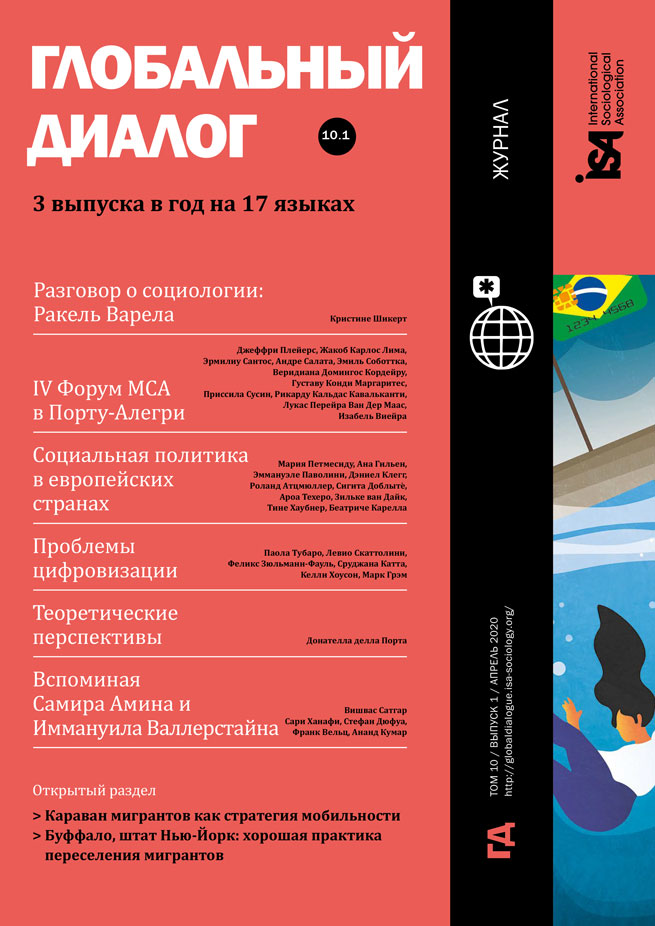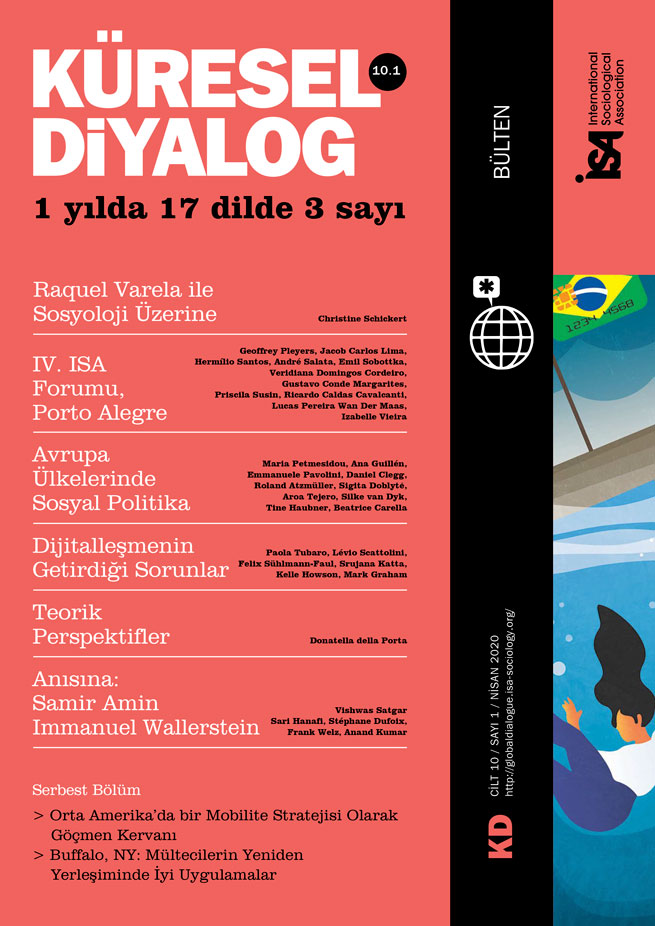Capitalism, Class, Contention

February 21, 2020
The fiftieth anniversary of the “Hot Autumn” of 1969, which had made sociologists like Colin Crouch and Alessandro Pizzorno talk of a “resurgence of the class struggle,” has been marked by the emergence of a global wave of massive protests, including millions’ marches and civil disobedience, erupting contemporaneously in places as far apart as Lebanon, Chile, Catalonia, and Hong Kong. In the “Hot Autumn” of 2019, the struggles against extreme inequalities and corrupt elites resonated with the anti-austerity protests of the beginning of the decade, as well as with the Global Justice Movement of the beginning of the millennium.
As protests against austerity periodically reemerged, towards the end of the 2010s, mobilizations against violence against women or global warming took over some of the frames of the previous waves, locating those issues within a critique of existing social and political relations. Fluid networks connected groups, often mobilizing citizens for the first time. While Fridays for Future, Extinction Rebellion, and Ni Una Menos bridged issues of violence against nature and women with capitalist exploitation, the massive mobilizations of the Hot Autumn of 2019 were rooted in national cleavages but also expressed rage at a global capitalist development that increased social inequalities and constrained civil rights and political freedom. The at times brutal repression of civil disobedience in the streets and in the courts fueled further protests in a spiral of politicization, with moments of radicalization.
While neoliberalism and its crisis brought about much discontent, often expressed in disruptive forms of protest, in social movement studies capitalism as a concept and research topic had been marginal. So too had been concern with the analysis of classes and class conflict. Since the Great Recession of 2008, however, there has been a growing attention to the structural bases of social conflicts and their expressions in institutionalized politics but also (and especially) in contentious politics. Well-established assumptions about the role of political opportunities, resource mobilization, and framing processes emerged as needing to be updated by taking into consideration the socio-economic conditions for protests. As I argue in what follows, in order to bring capitalism back into the analysis of protests we need to bridge the literature on social movements with critical contributions to the political economy of neoliberal capitalism.
Transformations in capitalism and new social movements
Research on labor movements pointed to the long-term transformation of capitalism leading to the decline of industrial workers and of their class consciousness as well as organizational capacity. In consonance with this, empirical research in social movement studies addressed the spreading of cleavages outside of factories, the forging of new collective identities, and the resistance to the hierarchies of society and the market. Especially since the 1970s, assessing the class cleavage as pacified, some social movement scholars had in fact pointed to the post-industrial and post-materialist character of the new movements they focused upon.
Theorizing the so-called new social movements, the works of social movement scholars like Alberto Melucci and Alain Touraine singled out some of the characteristics of social movements in a programmed (or post-industrial) society. As the control of information constitutes the principal source of social power, conflicts were expected to move from the workplace into areas such as research and development, the elaboration of information, science and technology, and the mass media. The central actors in the new conflict were no longer linked to industrial production but rather to the use and control of cognitive and symbolic resources. In contemporary societies, investment in the creation of individual autonomous centers of action was expected to enter into tension with the need for closer integration through increasing control over the very motives for human action. While both Touraine and Melucci adopted a sophisticated vision of the main social conflicts and their carriers, giving weight to the development of what one could call class consciousness, empirical research on the social base of “new social movements” focused on the class positions of protestors. With a tendency to generalize from a few movements and a few countries, studies pointed at some middle-class positions - such as white-collar workers in the public service - as more likely to participate in contentious forms than, for example blue-collar workers.
The resurgence of class conflicts
While these theorizations and empirical analyses were useful to illuminate some characteristics of contentious politics in a specific area of the world in the particular moment of expansion of the welfare state, the predictions of an end to labor conflicts and of protest as a middle-class arena proved inaccurate.
First, not only did the Western form of capitalism prove not to be the model toward which other economies and societies moved, but even in the West capitalism developed more exploitative forms than predicted by the theoreticians of a programmed society. The decline of industrial workers did not result in the decline of labor exploitation. Rather, together with the precarization of workers’ conditions, a proletarization of the middle class has been noted, with a decline in autonomy as well as in salary in many professions as well as in white-collar work in the service sector. As David Harvey pointed out, referring to Karl Marx’s analysis, profit-making through financial speculation grew as an alternative to profit-making through production in order to address the problems of over-accumulation. Together with forms of accumulation oriented towards expanded reproduction, with part of the surplus value reinvested in production, there has been a growth of accumulation by dispossession, reminiscent of the original accumulation of capital through the expansion of special relations with non-capitalist social formations.
Resurgent conflicts around working conditions targeted connected problems, with what Michael Burawoy classified as social movements against recommodification (the lifting of social protections that had been achieved); social movements against commodification of new areas of activity; and social movements against ex-commodification, defined as the expulsion of former commodities from the market, as e.g. the expulsion of former workers from the labor market. As the logic of accumulation impacts the forms of collective mobilization, we can expect protests to follow different logics given the specific characteristics of a financial capitalism that increases class fragmentation.
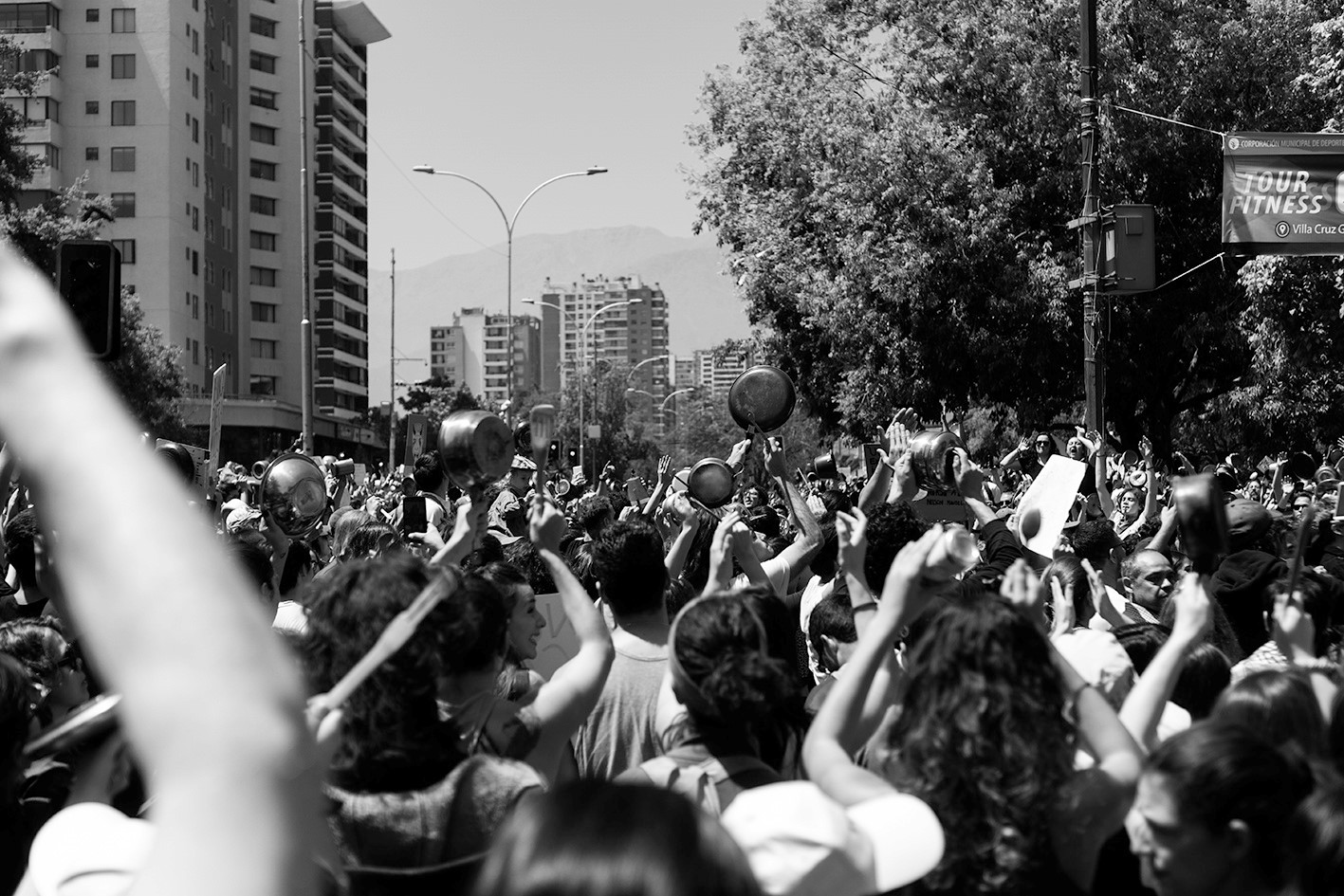
Class conflicts in late neoliberalism
Besides the debate on the broad trend in the succession of societal formations, mid-term cyclical processes in capitalist evolution must also be considered when looking at the conditions for a resurgence of class conflict in a moment of crisis of neoliberal capitalism. In his major work The Great Transformation Karl Polanyi singled out, in capitalist development, a double movement between social protection and the free market. As a second great transformation, neoliberal capitalism is based on the ideology of the extreme dominance of the market over society, as against the social domination of the market.
Common trends in Polanyi’s movements and countermovements are however embedded in different types of capitalism that coexist in the same historical periods. First of all, as the world system approach has pointed out, capitalism takes various forms at its core, semi-periphery, and periphery. Studies of the labor movement have criticized the tendency to generalize specific geopolitical trends at the global level, showing that while the industrial workers might indeed be in decline in the West, this is not the case in areas of the Global South. Second, Peter Hall, David Soskice, and others have singled out different varieties of capitalism, with free market economies, in which the market is the main element of interaction and relations, opposed to coordinated market economies. Recent research has addressed the different adaptation of the varieties of capitalism in the second Great Transformation and its crisis during the Great Recession. Discontent took different forms, linked to the specific characteristics, timing, and intensity of the financial crisis and the political responses to it. At the core and in the periphery, what Beverly Silver described as Polanyi’s type of class struggles in defense of old rights interact, in different mixes, with proactive Marx-type social movements that challenge the existing systems of production.
The agency of social movements
While these reflections within critical political economy provide useful insights for the analysis of the class bases of social conflicts, the capacity of the various social groups to build autonomous organizations as well as occupy positions of institutional power are open questions that social movement studies might help address. Social movement studies can, that is, illuminate how antisystemic movements and/or countermovements are created through agency and in a broad relational context. In doing this, they might contribute to push the analysis of classes away from a structuralist approach, considering the role of resources for mobilization as well as the role of an autonomous, political dimension.
First of all, while New Social Movement scholars were talking of a different moment in capitalist development, they usefully drew attention to the structural determinants of conflicts, while at the same time highlighting the importance of identification processes. In this sense, they argued against the structuralist interpretation of Marxism, which neo- or post-Marxist approaches have contributed in part to overcoming, without however investing much research on the specific development of organizational and ideational resources that explain the shift from structure to action.
On this, some elements pointed at by the New Social Movement approaches remain relevant for the understanding of contemporary conflicts. For instance, the importance of knowledge control as opposed to the decline of material ownership of the means of production, or the rejection of a hierarchical conception of the public in welfare states in favor of a definition of the commons, remain important in today’s mobilization. Not by chance, recent Marxist analyses of social movements in neoliberal times, such as the one by Colin Barker, broadly refer to Melucci and Touraine, in particular when they stress the importance of knowledge for discourses of resistance based on the recognition of radical needs and the overcoming of the dominant common sense. Also, research on long waves in contentious politics underlines the role of the accumulation of symbolic and material resources of resistance to capitalism, the consolidation of specific repertoires of protest, and the stabilization of institutional channels as well as alliances and networks.
As is visible in recent studies, the conjunctural economic but also political developments of the crisis, its forms and intensity, have had relevant effects on the forms and intensity of contention. Comparative analyses of social movements in the European periphery have challenged widespread hypotheses in labor sociology and social movement studies that progressive movements flower in times of abundance, when workers are structurally strong, and economic growth implies higher margins for investing profits in increased salaries and taxes to support welfare expenses. Such analyses have shown that it was where the crisis was stronger, in particular in countries like Iceland, Greece, and Spain, that it triggered higher levels of activity, with new repertoires of action as well as organizational forms and claims which were even able to achieve political success. Nevertheless, the reflection on the different challenges for contentious actors in times of abundance versus times of crisis remains relevant. As some research on labor activism has pointed at, crises can indeed be overcome through the creation of resources of solidarity during protests. The long strikes or the factory occupations, as the camping in squares or the pickets of the unemployed that characterized the anti-austerity protests, are indeed analyzed as a reaction to the crisis that then creates innovative ideas and practices. In Gramsci’s “organic crises” as crises of hegemony of the ruling class, under some political and social conditions, local militancy can converge into a broader social movement.
Concluding remarks
To conclude, a structuralist vision of classes tends to overlook the ways in which political opportunities mediate the socio-economic effects as well as the processes of resource mobilization, which is what social movement studies have mainly focused on. Bridging social movement studies with (critical) political economy is crucial to grasp the variety, intensity, and timing of social movements that have mobilized in distinct regions of the world with different temporalities in opposition to the crisis of neoliberal capitalism. In order to do this, social movement theory should engage more with critical analyses of capitalist transformation that investigate the current processes of accumulation and exploitation. At the same time, the analysis of capitalism’s structural transformations can benefit from social movement theory: it draws attention to the mobilization of its discontents.
Donatella della Porta, Scuola Normale Superiore, Florence, Italy <donatella.dellaporta@sns.it>


